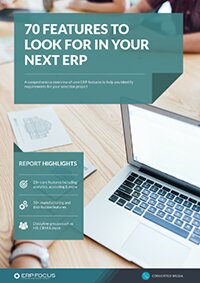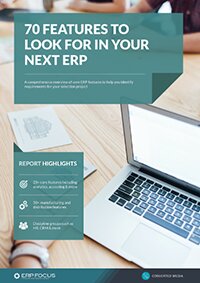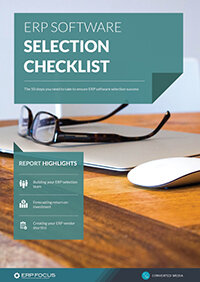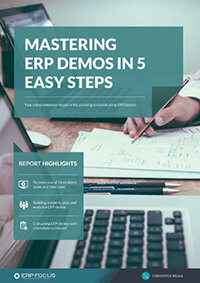Three tips for downsizing your ERP system
There are various rationales for the downsizing of an ERP system ranging from an interest in reduced system ownership costs, a general market segment contraction, or a desire to leverage newly-evolved platforms. While any of these areas of interest represent significant and somewhat disruptive decisions; moving from a Tier 1 system to Tier 2/3 variant represents many of the same change management challenges as any other larger ERP platform implementation.
Here are three ways to make your downsizing effort a bit less stressful:
Establish a project review
Remember your experience handling a first ERP purchase evolution? Well, downscaling your ERP requires, and utilizes, the same set of decision processes. Therefore, before you make any moves toward a “smaller” or “thinner” Tier 2/3 system, ensure that you have investigated and compiled all necessary information regarding “how, why, and how much” your current system costs from an operational perspective.
Recommended reading: 70 ERP features you could consider for your next ERP purchase.
At various times during this business evolution you will undoubtedly feel as if you’re re-designing the wheel. However that’s to be expected, and shouldn’t allow yourself to be challenged by the experience. The end-goal is to take past experience, apply it, and leverage it as a comparison against any new processes and/or technologies, so you make an even better platform selection going forward.
Once a project review is completed, sometimes folks end up accepting and further optimizing what they already own/operate. While at the same time, in other cases potential advantages offered by the project review will be more obvious. In the end of the day, however, a final result will rest on what the company needs, and more importantly, what costs will accrue operationally and financially while effecting such a change.
Review your Total Cost of Ownership (TCO), or ‘look before you leap’
This tip applies even more rigidly when considering a step-down consideration, particularly if you’ve gone through the effort of doing a proper project review. In this case, the end-goals are based on defining the totality of cost regarding the selection, train-up, launch and mounting of a new system, when directly compared with an already operating platform.
Bear in mind cost is cost; and when it comes to technology particularly, there’s no such thing as a free lunch - ever. So, if you are looking at a tier change, deep cost investigations and validations must apply, while being well-understood before you get anywhere close to a final decision.
Do rigorous option shopping
Chances are that the first time you implemented an ERP system the available constellation of resources-based systems offered a relatively short list to comprehend and understand. Today, however, that assertion has changed dramatically, and largely for the better.
In the current market, a company can buy and apply, virtually any type of ERP system ranging from small cloud variants as one or more starter platforms, to hybrid-cloud systems, multi-cloud systems, and completely customizable large-scale integrations harboring global access points, able to secure and manage terabytes worth of realtime activity. So be patient, research, read and understand what you’re considering before you move forward.
Believe me it’ll a lot less costly to abort a research effort in mid-stream, rather than getting into the throes of a new implementation only to find out that what you selected was the wrong system at the wrong operational price.
Free white paper

70 features to look for in your next ERP
A comprehensive guide to help you identify requirements for your ERP selection

Featured white papers
-

ERP Software Pricing Guide
Get the latest pricing information on over 80 popular ERP systems, and learn how to budget for your ERP project in our free guide
Download -

60-Step ERP Selection Checklist
Get the comprehensive checklist for your ERP selection project
Download -

ERP Demo Guide & Scorecard
Master your ERP demo with 5 easy steps using our free guide (includes demo scorecard)
Download
Related articles
-

The best ERP systems for process manufacturing
Consider these ERP systems when selecting your next process manufacturing ERP
-

Secret KPI: Why Your ERP Implementation Team Matters More Than Software
Learn how Godlan ensures successful ERP implementation for manufacturers with proven strategies &...
-

5 ERP pricing definitions you need to understand
Have you mastered the ERP pricing lexicon yet? Getting to grips with these five definitions is a ...

